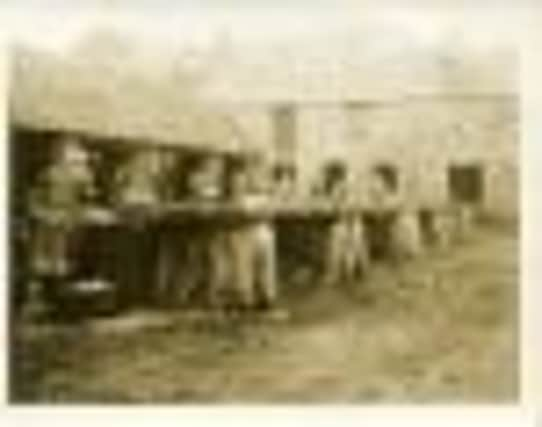Highland Clearances app offers tour of a dark time in Scots history


The Clearances Trail, in the Strath of Kildonan in Sutherland, traces a route through some of the most horrific sites of the 19th-century “trail of tears”.
It will become part of a wider tourist experience with the launch of an app for iPhones and iPads that allows users to view it from the comfort of their home.
Advertisement
Hide AdAdvertisement
Hide AdThe 17-mile trail will be formally launched next month. It visits places such as the Emigrants’ Monument in Helmsdale, built in 2007 to commemorate those who left the area, and settlements such as Ulbster and Gailiable that were cleared of human inhabitants to make way for sheep. The trail also visits a cemetery where residents were buried.
The area recorded the first dissent by a clan – the Gunns – against the Clearances, when an agent for southern sheep farmers was run off the land.
The trail is the brainchild of Jacquie Aitken, project manager at the Timespan Museum and Arts Centre in Helmsdale. Users who download the app will be able to access audio and visual information relating to each of the ten sites along the route.
“The bicentenary for the Clearances is next year, and we wanted a way to commemorate it,” she said. “We often have a lot of visitors from Canada who are descended from people who were cleared in the area, and the question they all ask is ‘where did my family live? Can we go and visit the place?’
“Creating a trail, and then an app, meant we could supply our visitors with that information as well as allow it to be viewed by a wider audience of people who might never manage to visit Sutherland in person.”
Areas of interest include settlements where the remains of original houses and farm buildings can be seen, and Kildonan Church, which was the central place of worship.
The app’s advertising reads: “The townships in every strath and glen, and on every hill, which once teemed with life, are now desolate and silent; and the only traces visible of the vanished, happy population are here and there, a half-buried hearthstone or a moss-grown graveyard.”
Advertisement
Hide AdAdvertisement
Hide AdMs Aitken rejected the notion the app was cashing in on the area’s grim history. “There are so many stories within the landscape,” she said. “It’s a beautiful place and we wanted to bring those stories to a wider audience, as well as giving the local community a chance to reflect and commemorate that time in history. It is incredibly important that we don’t forget what happened.”
Tom Devine, Scottish historian and author of Clearance and Improvement: Land, Power and People in Scotland, said: “The Clearances are one of the very few areas of Scottish history that even children have heard of – there’s the Jacobites, Mary Queen of Scots and the Clearances – and it’s inevitable that the local area is going to push the idea of doing something like this.
“If it’s an effective model, hopefully it could be rolled out elsewhere, in other areas that were subject to clearances such as parts of the Hebrides and the Lowlands.”
Professor John Lennon, director of the Moffat Centre for Travel and Tourism Business Development at Glasgow Caledonian University, who coined the phrase “dark tourism”, said: “The research on dark tourism suggests that the further back you go the less pertinent the voyeuristic interest becomes. It’s like people who visit Culloden – they’re not thrill-seekers or voyeurs, they’re interested in the history. Once you get a distance back, and it goes out of living memory, it becomes a more serious consideration of the past.”
The Clearances Trail app launches on 19 May and will cost 69p.